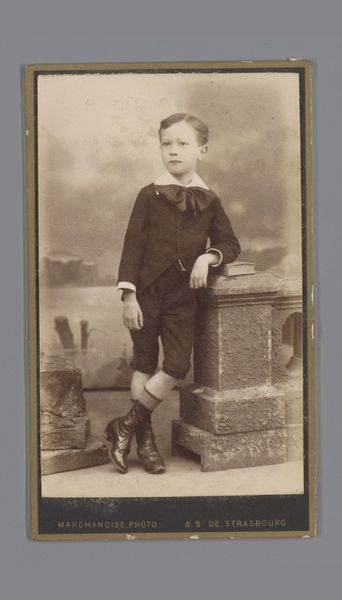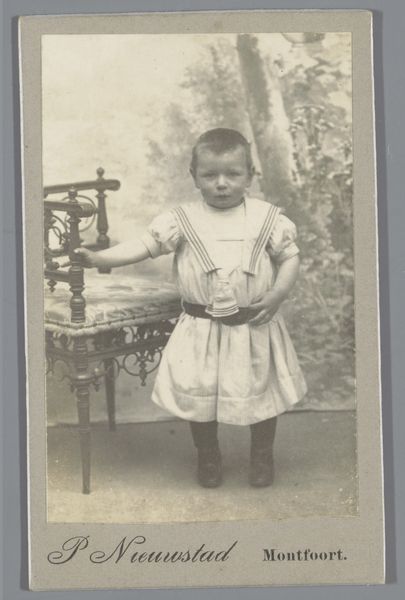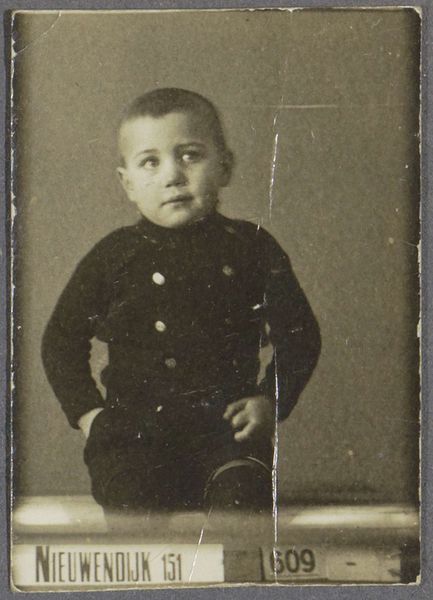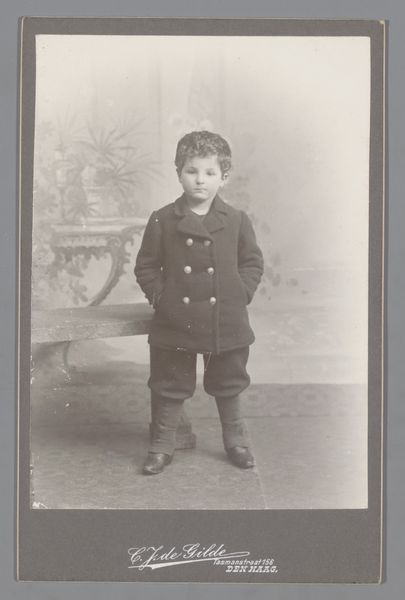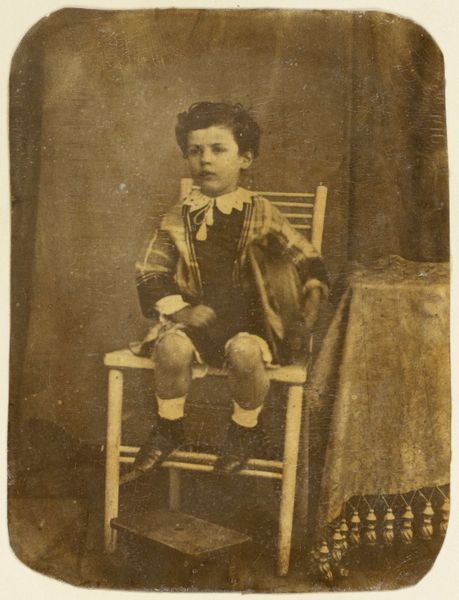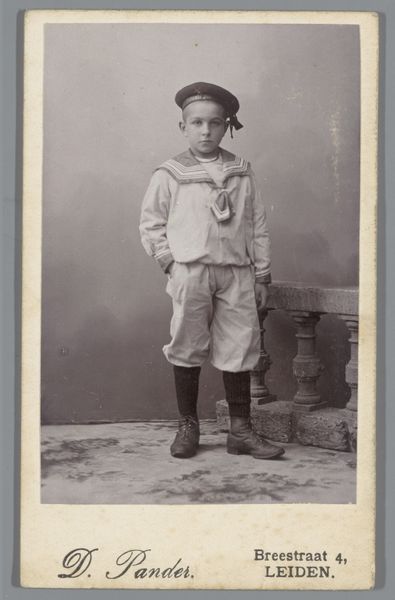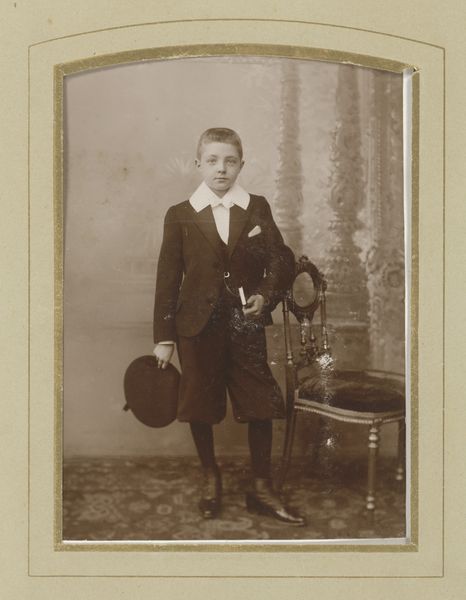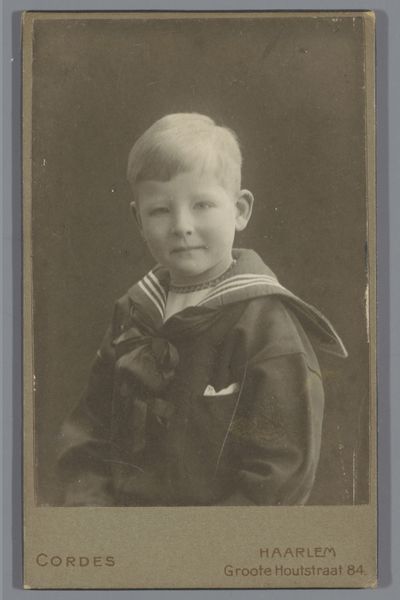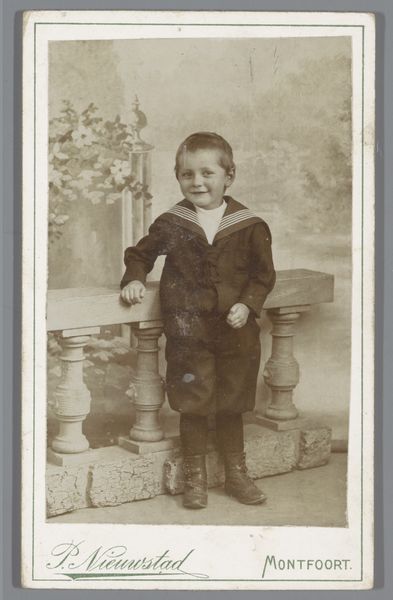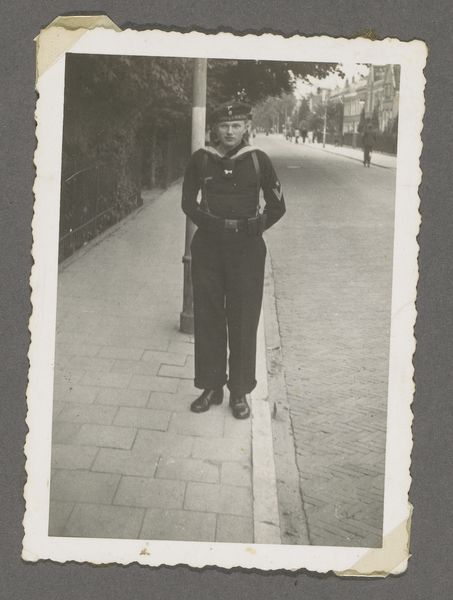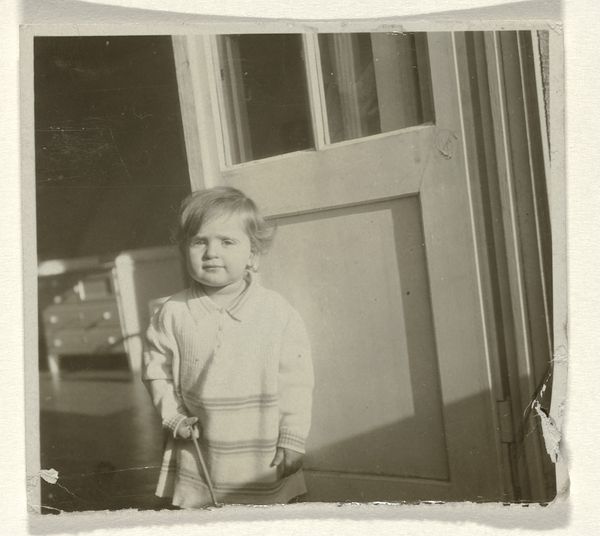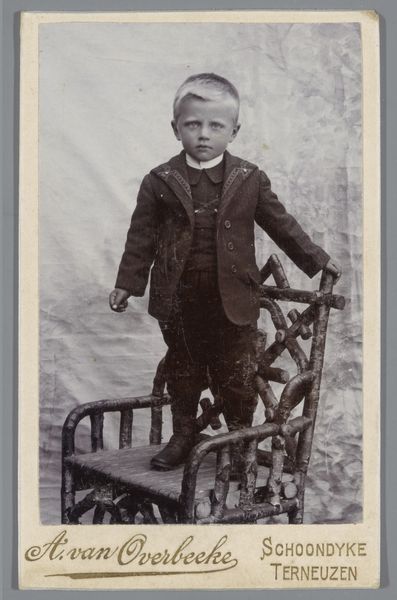
print, paper, photography, gelatin-silver-print
#
portrait
#
print photography
# print
#
paper
#
archive photography
#
photography
#
historical photography
#
gelatin-silver-print
Dimensions: height 90 mm, width 65 mm
Copyright: Rijks Museum: Open Domain
This small black and white photograph captures a young girl in a coat and beret, likely taken sometime in the 1930s or 40s. The photograph’s meaning is less about its aesthetic qualities and more about its status as a historical document, a trace of a life lived. As a historian, I'm interested in how the image creates meaning through its associations with a particular time and place. The girl’s clothing, the architecture in the background, and the photographic style all speak to a specific cultural context. These visual cues offer ways to investigate the social conditions that shaped the girl’s life. By researching the history of childhood, education, and fashion during the interwar period, we can begin to understand the social norms and expectations that she would have encountered. Delving into archives, newspapers, and family records might reveal the identity of the anonymous photographer, the girl, and her eventual fate. Ultimately, this photograph reminds us that art and historical meaning are contingent on social context.
Comments
rijksmuseum about 2 years ago
⋮
In 1928 a daughter, Isabel, was born to Eugen and Else Wachenheimer. In 1934 they posed before the family home in Stuttgart on Isabel’s first day of school. The photograph at the lower right was taken almost ten years later (1943) in the Westerbork transit camp. Isabel had been rounded up in Amsterdam five months earlier. The family was first sent to Theresienstadt and then on to Auschwitz-Birkenau, where Eugen and Else were gassed. Isabel was condemned to forced labour.
Join the conversation
Join millions of artists and users on Artera today and experience the ultimate creative platform.
